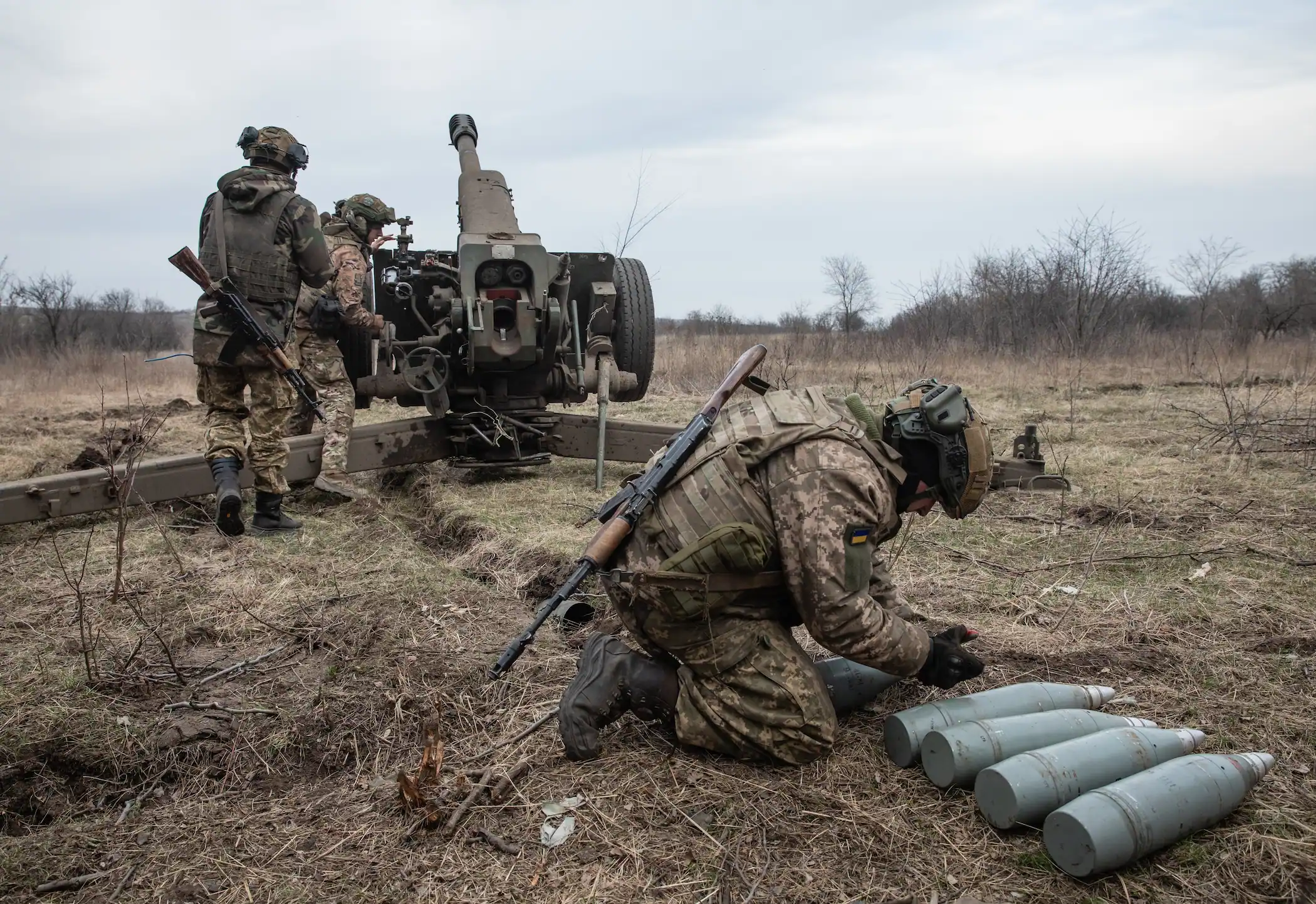The United States and Russia have a long and complicated history. The USSR and the United States of America were allies during the Second World War and quickly turned rivals during the Cold War (1947 – 1991). It was throughout this period that the ideological differences between the two superpowers reached its height, with the formation of the North Atlantic Treaty Organization (NATO) by the United States, and the USSR responding by creating the Warsaw Pact effectively splitting the world between East and West. Despite there being no direct conflict between the United States and USSR, each state would actively participate in proxy wars; where agents supplied by them would engage in hostilities such as in the Chinese Civil War (1944 – 1949), the Korean War (1950 – 1953), the Vietnam War (1955 – 1975), and the Soviet-Afghan War (1979 – 1989).
Furthermore, the United States and USSR would attempt to place weapons within each other’s spheres of influence with the United States doing so in Italy and Turkey in 1961 and the USSR responding by supplying Cuba which ultimately led to the Cuban Missile Crisis in 1962, and nearly brought both superpowers to nuclear war. Following the fall of the USSR, the United States was the only remaining superpower and relations between the United States and the newly formed Russian Federation began to improve, however by 1999 that came to an end as NATO further expanded in Eastern Europe with Poland, Hungary, and the Czech Republic joining, in 2004 Estonia, Latvia, and Lithuania joined as well, all had been former members of the USSR and were viewed by Russia as part of its sphere of influence.
Since then, United States-Russia relations have been consistently deteriorating with recent significant events being the invasion and annexation of Crimea in 2014 and accusations by the United States that Russia manipulated the 2016 Presidential Election. It is within this context of United States led encroachment into territory that Russia believes culturally and historically should be its own that the Russo-Ukrainian War resumed flowing the invasion of Crimea, below is where we will analyse what the United States has to gain and the legacy the Cold War casts on the Russia-United States relationship.
Ukraine Shifting Towards the Western Sphere of Influence
Ukraine was a founding member of the USSR in 1922 and regained its independence in 1991 and declared its neutrality following the collapse of the USSR. Since its independence in 1991 Ukraine has slowly drifted outside the Russian sphere of influence towards the Western sphere of influence, in 2004 the Orange Revolution succeeded and the results of the Ukrainian presidential election were annulled and the West aligned Victor Yushenko was declared President of Ukraine. Following the Orange Revolution and the 2003 Rose Revolution in Georgia, Russia accused the United States of inciting anti-Russian revolts.
Protests began again in late 2013 and lasted into 2014 after the Ukrainian Government rejected further European integration despite 315 of 349 Members of Parliament supported the document and instead chose to deepen economic ties with Russia. The Revolution of Dignity as it came to be named led to the ousting of the pro-Russian President Yanukovych and the United States was blamed by Russia for inciting the revolution with Senator John McCain visiting Ukraine during the protests and was quoted saying:
“We are here to support your just cause, the sovereign right of Ukraine to determine its own destiny freely and independently. And the destiny you seek lies in Europe,”
The ousting of President Yanukovych in the Maidan Revolution and subsequent Pro-Russian protests in areas of Ukraine was used as justification by Russia to invade and annex Crimea in 2014, the United States and EU responded by enacting sanctions against Russia, Russia responded by enacting sanctions of its own and accused the United States and EU of funding the Maidan Revolution. The Invasion of Crimea in 2014 marks the beginning of the Russo-Ukrainian War; conflict had remained contained until a full-scale invasion was launched in February of 2022.
The United States has a long history of active involvement in regime changes, with the purpose of installing individuals that would protect the interests of the United States at the cost of the welfare of their own nations themselves. They have had varying levels of success such as; the successful Guatemalan Coup (1954), which saw the sitting President of Guatemala removed after lobbying from the United Fruit Company, or with the failed invasion of Cuba during the Bay of Pigs (1961) to remove Fidel Castro from power. The United States and the Central Intelligence Agency’s (CIA) reputation in similar operations has created the reputation of a bogeyman where any form of unrest is blamed on the influence of the CIA in the respective region, such as in the Orange and Maidan Revolutions.
United States Aid to Ukraine
Following the invasion of Crimea in 2014 the United States together with allied states began assisting the Ukrainian Armed Forces (UAF) by providing training, mentoring, and doctrinal assistance. During the Obama Administration the United States provided nonlethal security assistance, this changed during the Trump Administration as lethal weapons were provided under Foreign Military Financing (FMF) and the use of national funds.
Since 2014 the United States has committed approximately $19.6 billion in security assistance to Ukraine of which $16.8 billion was dispensed after the renewed Russian invasion in February 2022. United States Assistance to Ukraine is provided using two main instruments; the Ukraine Security Assistance Initiative (USAI) and the Presidential Drawdown Authority (PDA).
The PDA allows for the quick transfer of Department of Defence stocks to foreign countries without the need of congressional approval, for Ukraine the PDA has been used 22 times since August 2021 totalling $9.8 billion. It is under the USAI that the United States government procures security equipment directly from the United States private military industry to assist Ukraine in its war against Russia; the USAI has seen Ukraine and the private military industry receive a total of $7 billion worth of equipment so far. The EU has also been drawing down on its own defence stockpiles to aid Ukraine in its defence, the issue of the possibility of replenishing their stockpiles has been raised as production has been slow leaving the potential for other military producers to take advantage of the lower supply.
Natural Gas from the United States
Russia is the largest exporter of natural gas in the world and energy is its most important economic sector with sales of natural gas and oil accounting for 36% of the country’s total budget in 2021. It has also been the European Union’s most important natural gas supplier with 78% of Russian natural gas exports going to Europe in 2020, which accounted for 44% of the EU’s natural gas consumption and approximately one third of EU members importing more than 50% of their natural gas needs from Russia. Due to the difficulty in transporting natural gas it is not considered a global good but a regional one, Russia exported 83% through pipelines with only 13% exported by chips carrying Liquefied Natural Gas (LNG), this allows Russia to exert influence over its regional consumers due to the interlinkage of its pipelines with the EU.
However, a large portion of Russia’s natural gas is delivered to Europe through the Soyouz pipeline that runs through Ukraine and has expectedly been witnessing difficulties since the start of the Russo-Ukrainian War. This leaves Russia with two options to deliver natural gas to Europe; TurkStream which runs under the Black Sea to Turkey, and Nord Stream 1 & 2 which are the largest pipelines from Russia to the EU run under the Baltic Sea and directly into Germany.
Nord Stream 1 is the older pipeline and has been supplying Germany with Russian natural gas since 2012, Nord Stream 2 was commissioned in 2011 and its construction has been protested by the United States impacted by sanctions from the United States due to fears that Russia would use the pipeline to further its geopolitical goals in Europe. Nord Stream 2 was expected to reduce natural gas transit through Poland and Ukraine by 23% and 13% respectively after its completion in September 2021, however, its certification from Germany was suspended in 2022 following the renewal of the Russo-Ukrainian War and Nord Stream 2 was never fully opened.
It is within these pipelines that leaks were first reported on the 26th of September, Denmark and Sweden announced that the leaks were more likely caused by sabotage rather than a natural occurrence with the EU and NATO also agreeing. Russia had already been reducing natural gas sent through Nord Stream 1 prior to the incident, due to what it says are maintenance issues that cannot be addressed due to sanctions.
So far, no one has claimed responsibility for the sabotage but both the United States and Russia have been quick to blame each other, in February President Biden in a meeting with German Chancellor Olaf Scholz:
“if Russia invades, that means tanks or troops crossing the border of Ukraine again, then there will be no longer a Nord Stream 2. We will bring an end to it..”
The Russian Foreign Ministry has used the statement by President Biden as proof of that the United States threatened and is involved in the sabotage of Nord Stream, following the United Nations Security Council meeting to discuss the potential sabotage President Putin said:
“Sanctions were not enough for the Anglo-Saxons: They moved on to sabotage. It is hard to believe but it is a fact that they organized the blasts on the Nord Stream international gas pipelines, which run along the bottom of the Baltic Sea … It is clear to everyone who benefits from this,”
President Putin’s insinuation that the United States benefits from the sabotage of the pipelines is not unfounded; the United States has long voiced its opposition to the Nord Stream 2 and imposed sanctions on any company — Russian or otherwise — involved in the construction of the pipeline, since the start of the War natural gas producers in the United States have LNG exports from Asia to Europe, with 70% of shipments heading towards the natural gas starved continent, up from 56% and 63%, respectively, in the previous two months, while making enormous profits due to the continued shortage in Europe, and coincidentally there was a United States Navy reconnaissance jet in proximity to the area hours after the leaks occurred.
Conclusion
It is important to discern fact from fiction, however in a relationship such as that of the United States and Russia, the line between truth and conspiracy is understandably blurred mainly because of the Cold War which had its fill of CIA assassinations, KGB poisonings, and endless proxy wars. The line is blurred yet again with the Russo-Ukrainian War, there have been endless theories about every aspect of the Russo-Ukrainian War and the lead up to it.
It is undeniable that the United States has the ability to reap massive gains from the war but its degree of complicity is difficult to pinpoint. It’s involvement in the Orange and Maidan Revolutions that led to the invasion of Crimea in 2014 is clear, elected officials from the United States did visit and give fiery speeches during the Maidan Revolution, however, this is not indicative of official United States foreign policy, and can be better explained by a general movement in Eastern Europe away from Russia and towards the West, however, the United States involvement in the larger movement in Eastern Europe is vague as countries leave the Russian sphere of influence they surely find themselves in that of the United States and the EU.
The United States has found an excellent playground for its defence industry as it has funnelled billions of dollars in equipment to the Ukraine that is being used, furthermore, EU countries have followed suit but find themselves having difficulty ramping up production to maintain their stockpiles, the United States has found a possible market for its defence industry not only in EU countries in need of short term stockpiles but in former Russian allies who understandably fear the possibility of a Russian Invasion. Since the Russo-Ukrainian War more countries have applied to join NATO, which in order to join would have to increase spending on defence.
Moreover, it has also found a new market that desperately needs LNG, and US producers have acted accordingly; they have increased the capacities of LNG terminals, redirected shipments from Asia from Europe to send more and more shipments towards Europe due to the enormous profit incentives. However, the United States most likely did not sabotage Nord Stream to achieve this, comments by President Biden, used by Russia as proof of an attack by the United States are taken out of context; President Biden was speaking about the consequences of a Russian invasion of Ukraine, which were realized as Germany stopped certification of Nord Stream 2, so there was no need to further damage the pipeline.
Finally, it is most likely that the explanation for the United States behaviour towards the area is the simplest; a weaker, docile, and easily contained Russia is best for the United States and its aspirations in Europe. Following the Cold War, the United States remained as the only superpower, a status which it does not wish to see challenged, Russia’s re-emergence with aspirations of the former Soviet Union threatens this. This raises the question: Why has the United States offered Ukraine such fervent support, despite remaining practically silent to previous Russian aggression towards its neighbours?
Simply, a long-drawn-out war between Russia and Ukraine is the United States greatest opportunity to achieve its goals in the areas of:
Energy Markets
The United States has finally proven to the EU that Russia is an unreliable source of energy, while LNG exporters in the United States have made billions and stand to make even more as winter approaches in Europe.
The United States Defence Industry
It has funnelled billions of equipment into Ukraine and vice versa into its defence industry, EU and NATO members are unable to replenish their own defensive stockpiles the United States defence industry stands as the only viable supplier. Additionally, the Baltic States long afraid of Russian aggression have also been purchasing weapons from the United States with Estonia spending $500 million on M142 High Mobility Artillery Rocket System (HIMARS) in July.
The Relevance of NATO
The war also serves to justify the existence of NATO, which was originally formed to contain the spread of the USSR and its influence. However, after the fall of the USSR many have criticized its existence as being a military alliance that protects against no one, event President Trump made comments to national security officials that NATO was obsolete and a drain on the United States. Following the invasion of Ukraine, NATO is again relevant with 5 new members requesting membership, the majority of which border Russia.
A Divided Russia
Many have referred to the Russo-Ukrainian War as “Putin’s War”, this is however not the case within Russia as the majority of Russians approve of President Putin’s actions; his approval rating increasing greatly following the invasion in 2022, replicating a similar increase following the invasion of Crimea in 2014. Yet, as the war has continued, Russia has drawn on more resources, which are already strained due to sanctions from the United States and Europe. On 21 of September, President Putin announced a “partial mobilization” as Russia looks to replenish manpower after meeting unexpected Ukrainian resistance, the decision finally caused a decrease in President Putin’s approval rating which has proven resilient despite losses on the battlefield. Russians reacted to the announcement by attempting to flee the country.
Furthermore, support for the Russian Armed Forces has been strong with 80% of Russians supporting the Armed Forces in March, however as more has been asked of the Russian people it has slowly begun to erode with 72% of people supporting the Armed Forces in September, a trend that will likely continue if the war does not come to a swift conclusion soon.
References
“$1.1 Billion in Additional Security Assistance for Ukraine.” U.S. Department of Defense. U.S. Department of Defense, September 28, 2022. https://www.defense.gov/News/Releases/Release/Article/3173378/11-billion-in-additional-security-assistance-for-ukraine/.
Eser, Patrick, Ndaona Chokani, and Reza Abhari. “Impact of Nord Stream 2 and LNG on gas trade and security of supply in the European gas network of 2030.” Applied energy 238 (2019): 816-830.
Mazzetti, Mark, and Eric Lichtblau. “C.I.A. Judgment on Russia Built on Swell of Evidence.” The New York Times. The New York Times, December 12, 2016. https://www.nytimes.com/2016/12/11/us/politics/cia-judgment-intelligence-russia-hacking-evidence.html.
Ostroukh, Andrey. “Rouble to Benefit from Record Gas Prices but Political Fears Could Outweigh.” Edited by Katya Golubkova and Philippa Fletcher. Reuters. Thomson Reuters, November 19, 2021. https://www.reuters.com/markets/europe/rouble-benefit-record-gas-prices-political-fears-could-outweigh-2021-11-19/.
“Parliament Passes Statement on Ukraine’s Aspirations for European Integration.” Kyiv Post. Kyiv Post, February 22, 2013. https://www.kyivpost.com/article/content/ukraine-politics/parliament-passes-statement-on-ukraines-aspirations-for-european-integration-320792.html.
Soldatkin, Vladimir, Darya Korsunskaya, Oksana Kobzeva , and Elena Fabrichnaya. “Factbox: Russia’s Oil and Gas Revenue Windfall.” Edited by Katya Golubkova and Alexander Smith. Reuters. Thomson Reuters, January 21, 2022. https://www.reuters.com/markets/europe/russias-oil-gas-revenue-windfall-2022-01-21/.
“The US Is Now Sending the Bulk of Its Export Gas to Europe.” Al Arabiya English. Al Arabiya English, June 7, 2022. https://english.alarabiya.net/business/energy/2022/06/07/The-US-is-now-sending-the-bulk-of-its-export-gas-to-Europe.
U.S. Library of Congress. Congressional Research Service. The Role of Russian Gas, by Michael Ratner. IN11900. 2022.
U.S. Library of Congress. Congressional Research Service. U.S. Security Assistance to Ukraine, by Christina L. Arabia, Andrew S. Bowen, Cory Welt. IF12040. 2022.
Vakulenko, Sergey. “Shock and Awe: Who Attacked the Nord Stream Pipelines?” Carnegie Endowment for International Peace, September 30, 2022. https://carnegieendowment.org/politika/88062.
Volkov, Denis, and Andrei Kolesnikov. “My Country, Right or Wrong: Russian Public Opinion on Ukraine.” Carnegie Endowment for International Peace, September 7, 2022. https://carnegieendowment.org/2022/09/07/my-country-right-or-wrong-russian-public-opinion-on-ukraine-pub-87803.












Comments